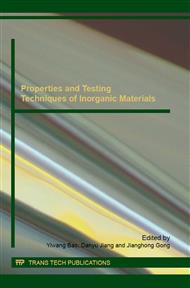p.447
p.451
p.455
p.462
p.466
p.472
p.477
p.482
p.486
Comparison of Hydration Mechanism between Cements from Two Different Residual Muds
Abstract:
Steel slags are byproduct of steel making process in blast oxidizing furnace (BOF) and electric arc furnace (EAF), including BOF slag, EAF slag. Residual slag mud is discharged after recover of iron from steel slag by magnetic separation after a wet grinding process. The wet disposal process has higher efficiency than dry process but would deteriorate cementitious reactivity of wet residual mud. For residual EAF slag mud and residual BOF slag mud have different composition, effects of wet disposal process on their reactivity and hydration mechanism of related cements were researched in the paper. Analyses of microstructure and testes of mechanical properties for cements from the two different mud showed that the cements composed of 25 % of different mud respectively can reach the national standard of 42.5 grade cements. But residual EAF slag mud has better reactivity. Cement composed of residual EAF slag mud had a higher increase of compressive strength during 28 days of hydrations, and fluffy C-S-H gel and needlelike AFt crystal would increase obviously. Reactivity of BOF slag would degraded more in wet disposal process for its quicker hydration than EAF slag which resulted in more Ca(OH)2 and C-S-H gel formed in the discharged mud,. EAF had lower basicity, content of less f-CaOand C3S, more P2O5 and C2S, which would contribute to its stability in the wet disposal process. EAF slag is more suitable for wet-disposal process.
Info:
Periodical:
Pages:
466-471
Citation:
Online since:
February 2016
Authors:
Keywords:
Price:
Сopyright:
© 2016 Trans Tech Publications Ltd. All Rights Reserved
Share:
Citation:


